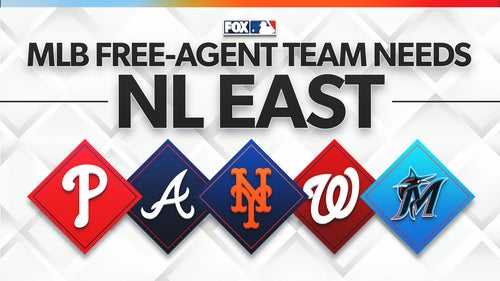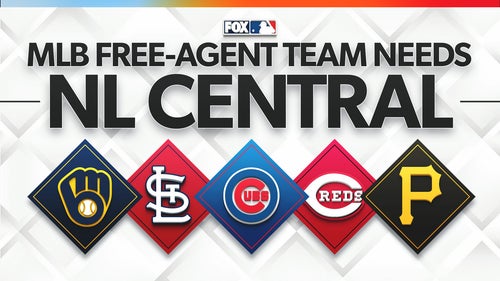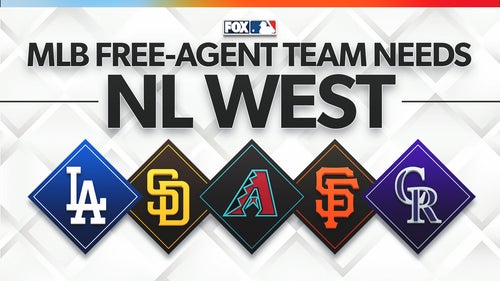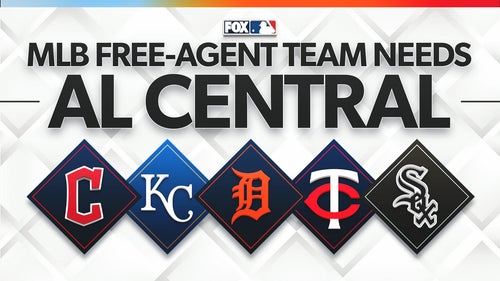
Yankees: Four Off Season Mulligans For GM Brian Cashman
Yankees Stadium: Bill Streicher-USA TODAY Sports
The Yankees offseason can best be described as unspectacular. No harm, no foul. But what if there were mulligans in baseball? What would the Yankees, and more specifically, Brian Cashman, have done differently?
The Yankees ended the 2016 season on a high note. They finished five games over, missing the playoffs by just a hair. Midseason moves that brought in fresh young talent were being heralded and Yankees fans were on their feet applauding the new direction the team was taking. Alex Rodriguez became a memory, and Mark Teixeria suited up for the final time.
Didi Gregorius emerged as a potential All-Star for years to come, and Gary Sanchez lit up the night sky with home run after home run. Mashiro Tanaka put forth a CY Young type season, and more importantly perhaps, finished the year healthy with no setbacks. C C Sabathia showed flashes of his old brilliance and, for the most part, he too remained healthy throughout the season.
For the Yankees, the offseason presented an opportunity to fine tune the team by reloading the bullpen and adding a proven starter to the rotation. If an opportunity to trade Brett Gardner and Jacoby Ellsbury came along, Brian Cashman was in a mood to listen. Ditto Chase Headley.
Cashman acted quickly by corralling the services of Aroldis Chapman for five years and $80 million. He followed that up by signing Matt Holliday to a one-year deal. Both moves were widely applauded, and Cashman continued to fly high.
Then, Cashman made an abrupt U-turn, announcing that he was done, and the 40-man roster the Yankees had would be the same one they would have on Opening Day. This led to some head scratching, especially since the hole(s) in the starting rotation looked like an abyss and had yet to be addressed. But generally speaking, Cashman had enough chips in his pocket from all the good he had accomplished, and criticism was muted when it existed at all.
Now, with Spring Training only days away, it might give cause to wonder if Cashman has any regrets, and if he had a few mulligans, what might he do differently. Wikipedia Games describes a mulligan as follows:
A mulligan is a second chance to perform an action, usually after the first chance went wrong through bad luck or a blunder. Its best-known meaning is in golf, whereby a player is informally allowed to replay a stroke, even though this is against the formal rules of golf.
Now, General Managers can be stubborn and bull-headed about the decisions they make. So, I would guess that if we asked Brian Cashman about his mulligans this offseason, we wouldn’t get much of answer. So, I’ll do it for him. Here, then, are the top four Yankees offseason mulligans.
Kim Klement-USA TODAY Sports
Did Brian McCann Really Have To Go?
The reasons why Brian McCann left the Yankees to join the Houston Astros are well known. He saw the writing on the wall with Gary Sanchez, and he knew he would be reduced to a secondary role as a catcher.
To his credit, McCann feels like he has a lot of baseball still left in him, and he also believes his full-time playing days as a catcher are not over. He was also parlaying for a multi-year deal.
What seems to be apparent, though, is that the Yankees made only a half-hearted effort to keep this proven veteran in the Bronx. He was dismissed and put in the “probably gone” category, and nearly forgotten about from there.
Did The Yankees Try Very Hard On This One
It is significant to note, however, that the Yankees were able to come to a one-year agreement with a veteran in similar circumstances (Matt Holliday), and both sides appear to be happy with the deal.
Barring injuries, Gary Sanchez will catch anywhere from 130-140 games this season. And even though Sanchez is young and strong, the 140 number is probably a little high, especially when you get to mid-season when the team is playing six days a week in summer temperatures.
Clearly, the Yankees were in no position to offer McCann the full-time catching job. But together with DH opportunities, is there any reason why McCann wouldn’t have accumulated as many as 400 at-bats this season?
Moreover, if Brian McCann knew that the Yankees wanted him, might he have given second thoughts to uprooting his family to live in Houston for the next two years?
And if the Yankees has made clear to him that he had a future with the team beyond his playing days, would that have made a difference? Because he is made of the right stuff to become a manager or coach if he wants to go that route when he retires.
The Yankees Will Feel McCann’s Loss
His value to the Yankees, and in particular, Gary Sanchez, goes well beyond those 400 at-bats. McCann is tailor made to be the mentor Gary Sanchez needs because hearing advice from a colleague is far different than hearing it from a manager or coach.
So, by not insisting on signing McCann, the Yankees, in effect, made a decision to re-invent the wheel with Gary Sanchez. All of the knowledge that McCann possesses about Yankees pitchers is now 2,500 miles away, instead of a locker adjacent to each other in the clubhouse.
The Yankees could live to regret this one, and it’ll be sooner rather than later.
Uh Brian, Did You Forget Something Here?
I can’t count all the stories that appeared in Yanks Go Yard and elsewhere over the offseason regarding the need for the Yankees to strengthen their starting rotation. And yet, despite those repeated cries for help, the Yankees starting rotation is essentially the same as it was in early October when the 2016 season ended. Save that is, for a battle that is forthcoming for the fifth spot.
And just yesterday, Brian Cashman went for some “insurance” against the possibility of an unhealthy Greg Bird, signing a home run and strikeout king to the roster. But at the same time, we have no insurance against Michael Pineda self-imploding again. And no guarantee that Luis Severino will develop his head so that it’s in tune with his body. And no insurance that C C Sabathia can make it through 30-35 starts, unscathed by injuries. Or, that Masahiro Tanaka will not pack his bags and leave the team after the 2017 season if he decides to exercise the opt-out clause in his contract.
It’s Not About Adding An Ace
To be clear, we’re not talking about adding an ace. It never was about that. And when the Red Sox decided to dance to the tune that the Yankees always played, signing Chris Sale in return a portion of their future, most of us applauded the Yankees willingness to not engage in the sweepstakes that were sweeping the nation. And the same was true when Jose Quintana became the flavor of the day.
The ace of the staff will come next season when money is freed up, and we can begin to ask ourselves, for instance, how Jake Arrieta or Yu Darvish might look in a Yankees uniform when they become free agents.
Instead, we are talking about a number two, or at worst, a number three in the starting five. Think of the names that have been passed by the Yankees this winter. None of them will light up Broadway, but any of them could have given the team innings and competitive starts.
Andrew Cashner, one-year, $10 million. Edison Volquez, two-years, $22 million. Bartolo Colon, one-year, $12.5 million. For sure, this is not chump change, but these salaries are comparable to the $7.4 million Pineda will earn this season and far below the $25 million is due.
And just a couple of days ago, Jason Hamels, who was an integral part of the Cubs championship team last year, was scooped up by the Kansas City Royals amid rumors that the Yankees were “in on the talks.” The Yankees have never been a team that talks, they walk! They make the moves they need to make, and the rest of the league better get out of their way.
But, not this offseason. Cashman is going with what he’s got. Which, when you think about it, isn’t much at all if the Yankees truly expect to be competitive in what promises to be a very tough American League East division.
Are The Yankees Really In It To Win It
But maybe that’s the point. And though Brian Cashman will never admit to this, perhaps he doesn’t expect the Yankees to be competitive this year, setting his sights on 2018 and beyond. And he’s thinking to himself, let the old man go out there 30 or 35 times this year to earn his $25 million (all courtesy of Spotrac). And let Michael Pinedo and possibly Luis Severino burn out to the point where there’s no argument next year about their “potential.”
Or, on the flip side, let them both have a decent season this year, one that increases their trade value, a development that would open up a broad range of possibilities for the Yankees to pursue if it ever transpired.
The interesting thing, though, is the number of free agent pitchers out there for Cashman to sign, if he wanted to move this late in the game. Jair Jurrgens, Doug Fister, Colby Lewis, and a half dozen others can be had for a mere pittance, and certainly, less than it cost to sign the man with 206 strikeouts last season. Even Tim Lincecum might be worth a shot, or Chris Capuano on minor league deals.
Instead, Brian Cashman is giving the team nothing regarding adding a proven starter to the mix. Go figure.
Winslow Townson-USA TODAY Sports
The Decision To Go With All Three Veterans
When the offseason began, it was widely assumed that among Brett Gardner, Chase Headley, and Jacoby Ellsbury, any one, or even possibly all of them, could be traded by the time Spring Training opened in February.
But, as we now know, it is February, and all three are slated to be in the Yankees Opening Day lineup. Was the speculation premature, or did a market never develop for them? Or, did Brian Cashman ultimately throw his hands in the year and give the effort up?
Because to trade, these players would require a significant effort. And you’d find yourself talking to teams that want to steal you blind when it comes to the return you get for them, and then, to add insult to injury, pick your pockets with outrageous demands to take X percent of the salary due to each player.
However, Brian Cashman had to know that a straight up deal without financial considerations was next to impossible. And it’s plausible that Hal Steinbrenner was whispering in his ear about the need for the Yankees to get their money’s worth out of the trio on the playing field.
Yankees Manager Joe Girardi: The X Factor
But it’s more likely that it was Joe Girardi whispering in his ear and talking about the need for what Girardi would call “balance” between the young talent and the veterans. When in reality, though, it would be the fact that Girardi is more comfortable with an experienced team, and he didn’t want to see these players go for that reason.
Because while Ellsbury might stink up the joint with his bat, at least Girardi didn’t have to worry about him getting his work in for the day, whether he was playing or not. And he would need to send texts out telling his players, “Remember guys, we wear a suit and tie when we are in public airports.”
It’s all conjecture. But if even part of it is correct, it has to be deemed a mulligan for Cashman in not being able to trade at least one, with Gardner probably being the most tradable among the three.
There’s always July, though. And maybe Cashman will pick up his ball, choosing to take a penalty for not having acted during this offseason. And by that time, the Yankees will have a better picture of themselves as pretenders or contenders in the race for the Playoffs.
But let it be said now that when a full one-third of your starting lineup is taken by aging veterans (Holliday gets a pass), it cannot be said that the Yankees are truly all-in on a youth movement this season.
40 Home Runs For 200 Strikeouts Is Poor Math
This one is still warm on the stove, as the deal for Chris Carter was completed yesterday when the Yankees signed him to a paltry $3 million one-year deal. Carter will get incentive bonuses too, depending on the number of plate appearances he gets in 2017. Which, should make for some interesting conversations between Joe Girardi and Carter as the season wears on.
To be fair, Brian Cashman always hedged his bets when he claimed that the Yankees 40-man roster was set, and we should expect no additions or deletions. Unless, of course, something “comes along” that offers us an opportunity to improve.
More from Yanks Go Yard
And while most of us were waiting (and still are waiting) for an opportunity to improve the starting rotation, Cashman went ahead and picked up a player who has been discarded by two teams in two successive years.
Adam Dunn & Dave Kingman: Welcome To The Yankees
Chris Carter has hit 150 homers during his seven-year career while striking out 875 times and hitting .218/.314/.463. If that doesn’t sound like the second coming of Adam Dunn or Dave Kingman, then I don’t don’t what does. But, he’s here.
And he will get playing time, whether it means taking at-bats away from Greg Bird or Matt Holliday in the DH spot. Because as things stand now, something has to give with regards to playing time for everyone.
But the question I have, and the one that makes this a likely mulligan for Cashman is what the effect of Carter will be in the clubhouse, and not the fact that for every home run he hits, he strikes out seven times.
Because I have to wonder about a guy who will now be playing for his fourth team in a career that extends over seven seasons. And I haven’t heard any of his former teammates shouting about what a wonder person he is, and how valuable an asset he’s been to his team.
And for a young player like a Greg Bird, Aaron Judge, Clint Frazier or Tyler Austin trying to not only make the team, but to formulate what can become a nucleus of a new Core Four or Five, or six counting Gary Sanchez and Gleyber Torres when he gets here.
And to know that a veteran is sitting there ahead of them, at least in the mind of Joe Girardi, who would prefer to have Mark Teixeria and Alex Rodriguez back in uniform, that’s gotta be at least a bit demoralizing.
Want your voice heard? Join the Yanks Go Yard team!
But, it’s too late now.










